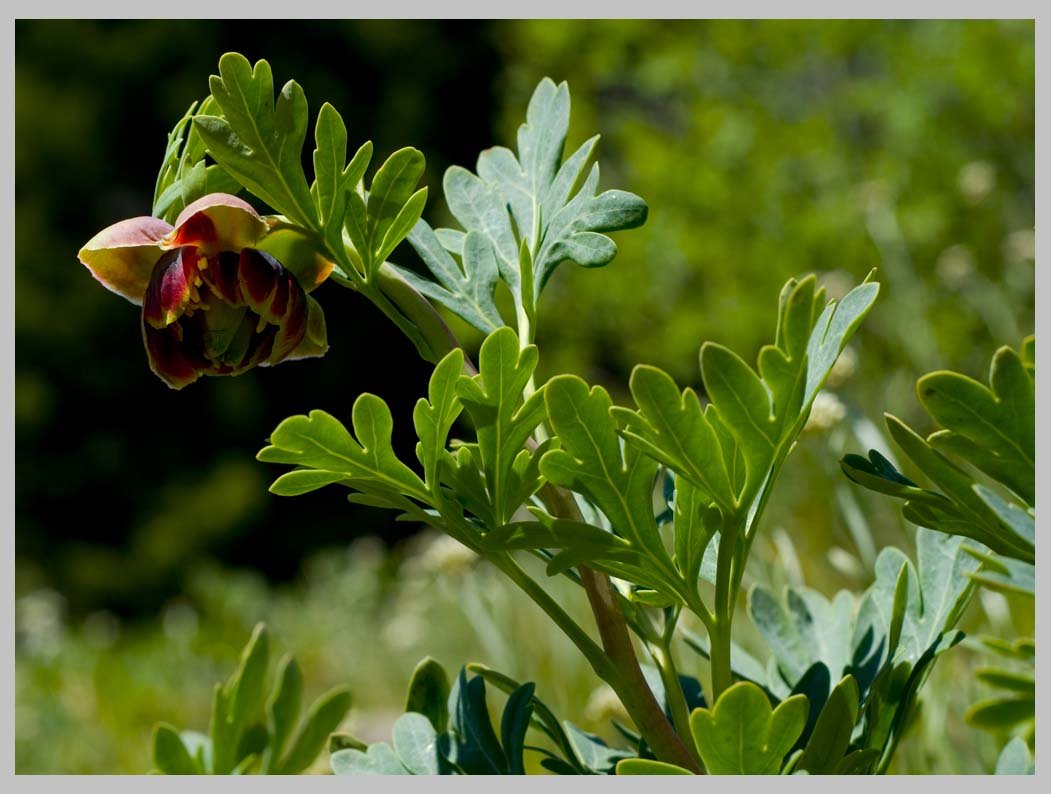Brown's Peony
Paeonia brownii
zones 2-5
15 seeds
Paeonia brownii is a low to medium height, herbaceous perennial flowering plant in the family Paeoniaceae. It has compound, steely-gray, somewhat fleshy leaves and small drooping maroon flowers. Its vernacular name is Brown's Peony, Native Peony or Western Peony. It is native to the western United States and usually grows at altitude, often as undergrowth in part-shade. The fleshy roots store food to carry the plant through the dry summers and produce new leaves and flowers the following spring.
NOTE: due to the large size of the seed, they are shipped in a small box to avoid crushing by postal processing. This results in an increased shipping charge, reflected in the seed cost.
sorry, this product is not available for shipping to Canada
Since stored seed is more difficult to germinate, direct sowing seeds in autumn brings the most success. As long as you experience temperatures of 40 degrees F or below for a good part of the winter, Brown's Peony should have no trouble germinating.
If the seeds can’t be sown in autumn, they will need 3 months of cold, moist stratification. To stratify seeds indoors, mix them with a little moist soil in a plastic bag and put it in the refrigerator. Try to time the stratification so that it ends when temperatures are between 60-70 degrees F. Following sufficient stratification either sow the seed directly or in pots. At temperatures of 60-70 F, most of the seeds should germinate in about 3 weeks. You can often see some early germinators in the plastic bags in the refrigerator. This is a good sign that the seeds are ready to sow.
Paeonia brownii
zones 2-5
15 seeds
Paeonia brownii is a low to medium height, herbaceous perennial flowering plant in the family Paeoniaceae. It has compound, steely-gray, somewhat fleshy leaves and small drooping maroon flowers. Its vernacular name is Brown's Peony, Native Peony or Western Peony. It is native to the western United States and usually grows at altitude, often as undergrowth in part-shade. The fleshy roots store food to carry the plant through the dry summers and produce new leaves and flowers the following spring.
NOTE: due to the large size of the seed, they are shipped in a small box to avoid crushing by postal processing. This results in an increased shipping charge, reflected in the seed cost.
sorry, this product is not available for shipping to Canada
Since stored seed is more difficult to germinate, direct sowing seeds in autumn brings the most success. As long as you experience temperatures of 40 degrees F or below for a good part of the winter, Brown's Peony should have no trouble germinating.
If the seeds can’t be sown in autumn, they will need 3 months of cold, moist stratification. To stratify seeds indoors, mix them with a little moist soil in a plastic bag and put it in the refrigerator. Try to time the stratification so that it ends when temperatures are between 60-70 degrees F. Following sufficient stratification either sow the seed directly or in pots. At temperatures of 60-70 F, most of the seeds should germinate in about 3 weeks. You can often see some early germinators in the plastic bags in the refrigerator. This is a good sign that the seeds are ready to sow.
Paeonia brownii
zones 2-5
15 seeds
Paeonia brownii is a low to medium height, herbaceous perennial flowering plant in the family Paeoniaceae. It has compound, steely-gray, somewhat fleshy leaves and small drooping maroon flowers. Its vernacular name is Brown's Peony, Native Peony or Western Peony. It is native to the western United States and usually grows at altitude, often as undergrowth in part-shade. The fleshy roots store food to carry the plant through the dry summers and produce new leaves and flowers the following spring.
NOTE: due to the large size of the seed, they are shipped in a small box to avoid crushing by postal processing. This results in an increased shipping charge, reflected in the seed cost.
sorry, this product is not available for shipping to Canada
Since stored seed is more difficult to germinate, direct sowing seeds in autumn brings the most success. As long as you experience temperatures of 40 degrees F or below for a good part of the winter, Brown's Peony should have no trouble germinating.
If the seeds can’t be sown in autumn, they will need 3 months of cold, moist stratification. To stratify seeds indoors, mix them with a little moist soil in a plastic bag and put it in the refrigerator. Try to time the stratification so that it ends when temperatures are between 60-70 degrees F. Following sufficient stratification either sow the seed directly or in pots. At temperatures of 60-70 F, most of the seeds should germinate in about 3 weeks. You can often see some early germinators in the plastic bags in the refrigerator. This is a good sign that the seeds are ready to sow.
